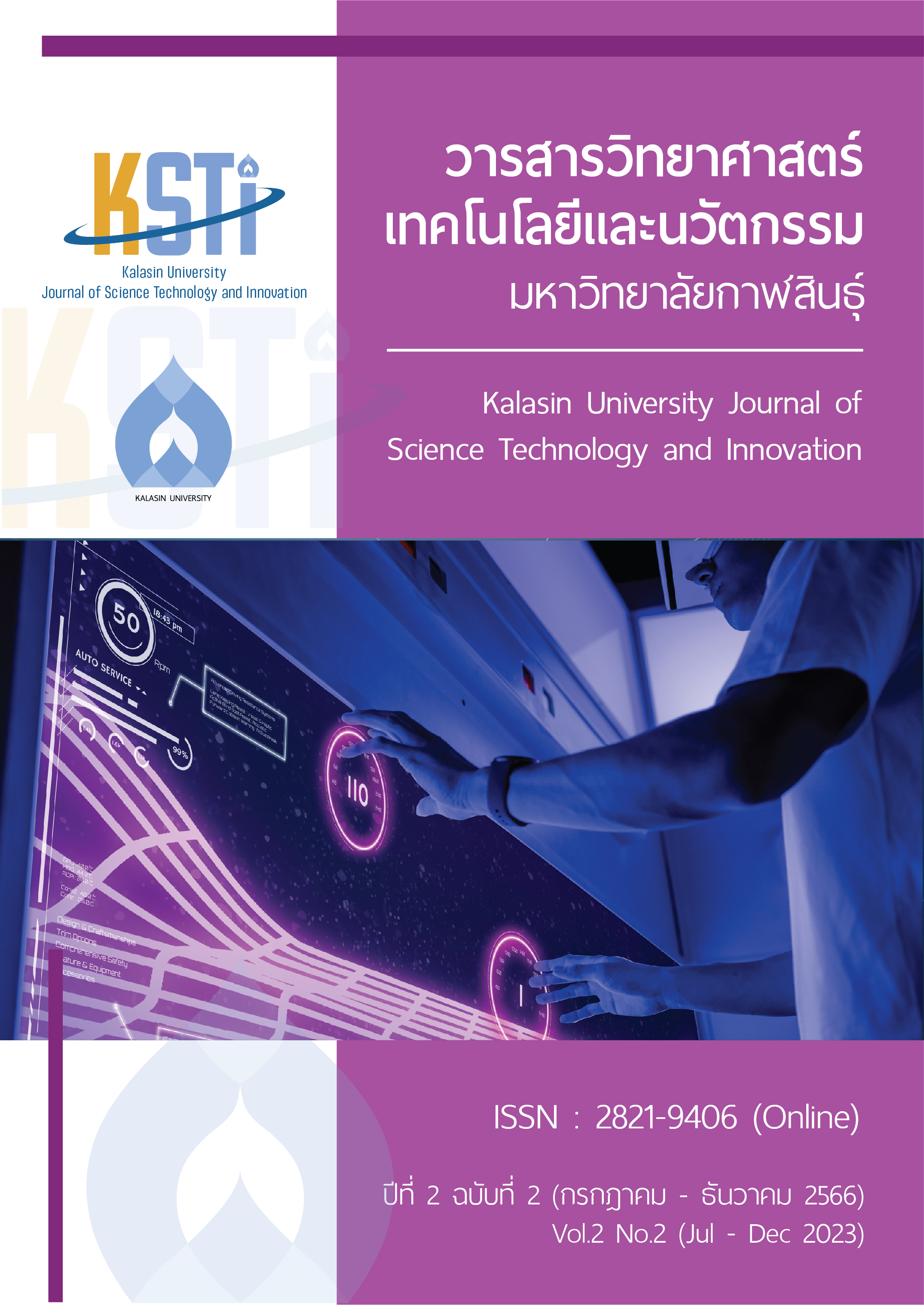Studying the effectiveness of a model for predicting post COVID-19 stress among university students upon returning to campus
Main Article Content
Abstract
Considering the COVID-19 pandemic, students have been engaged in remote learning for the past two years. This has resulted in changes in the way they learn and take exams. They have had to adapt to learning online, which has led to a lack of social interaction with peers and professors, causing elevated stress levels. Based on a survey by the Department of Mental Health, data analysis was conducted to determine the stress levels of students enrolled at Kasetsart University, Sriracha Campus using data mining techniques. Three models were used, including Decision Tree, Naïve Bayes, and K-Nearest Neighbor Algorithm. The results showed that Naïve Bayes had the highest accuracy in predicting stress levels among students after returning to university with a model efficiency of 80%. The findings of this research underline the importance for universities to provide support and resources for students who may be experiencing stress and anxiety related to the COVID-19 pandemic and remote learning. These services could include mental health services, academic guidance, and adaptable learning choices. Additionally, further research could be conducted to explore the effectiveness of different interventions and strategies for reducing stress levels and promoting well-being among university students during times of crisis and upheaval. This could include mindfulness-based practices, cognitive-behavioral therapy, and peer support initiatives.
Downloads
Article Details

This work is licensed under a Creative Commons Attribution-NonCommercial-NoDerivatives 4.0 International License.
The owner (Research and Development Institute, Kalasin University), the authors agree that any copies of the article or any part thereof distributed or posted by them in print or electronic format as permitted will include the notice of copyright as stipulated in the journal and a full citation to the final published version of the contribution in the journal as published by Research and Development Institute, Kalasin University.
References
บุคลากรสาธารณสุขอำเภอปราณบุรี จังหวัดประจวบคีรีขันธ์. ภาวะความเครียดในช่วงวิกฤต โควิด-19 [อินเตอร์เน็ต]. 2565 [เข้าถึงเมื่อ 9 ตุลาคม 2565] เข้าถึงจาก:
https://he02.tcithaijo.org/index.php/odpc10ubon/article/view/257333/176149
อัชฌาพร กว้างสวาสดิ์ และ คณะ .ระบบทำนายระดับความเครียด ด้วยเทคนิคต้นไม้การตัดสินใจ. Rattanakosin Journal of Science and Technology: RJST.2019 , Volume 1 Issue 2: 13-26 ,Online ISSN: 2673-0553
โรงพยาบาลมนารมย์. แบบประเมินและวิเคราะห์ความเครียด (Strain). [อินเตอร์เน็ต]. 2565 [เข้าถึงเมื่อ 9 ตุลาคม 2565] เข้าถึงจาก: https://www.manarom.com/test/strain_thai.html
พงศ์เสวก เอนกจำนงค์พร. ความเครียดของนักศึกษาระดับปริญญาบัณฑิต.วารสารธรรมศาสตร์. 2564;ปีที่ 41 (ฉบับที่ 2):196-210.
สายฝน สีนอเพีย.รุจิรา ดวงสงค์. ภาวะซึมเศร้า ความเครียดกับการจัดการปัญหาของนักศึกษาระดับปริญญาตรี; วารสารวิจัยสาธารณสุขศาตร์ มหาวิทยาลัยขอนแก่น. 2564; ปีที่14 (ฉบับที่ 3).
สาธารณสุข. ความเครียดและวิธีเผชิญความเครียดของนักศึกษา. [อินเตอร์เน็ต]. 2565 [เข้าถึงเมื่อ 9 ตุลาคม 2565] เข้าถึงจาก: https://so02.tcithaijo.org/index.php/jgmcukk/article/download/240370/165142/844832
สิรินิตย์ พรรณหาญ. บุญมี พันธุ์ไทย. กมลทิพย์ ศรีหาเศษ. ปัจจัยที่มีผลต่อความเครียดในการเรียนของนักศึกษาแพทย์ชั้นปีที่ 4-6. Veridian E-Journal, Silpakorn University. 2561;ปีที่ 11 (ฉบับที่ 3): 2579-2593
วารุณี มีมุ่งบุญ. การศึกษาความเครียดของนักศึกษาระดับปริญญาตรี. [อินเตอร์เน็ต]. 2565 [เข้าถึงเมื่อ 9 ตุลาคม 2565] เข้าถึงจาก: http://www.repository.rmutt.ac.th/dspace/handle/123456789/3796?mode=full
ศจี วานิช. Data Mining (เหมืองข้อมูล). [อินเตอร์เน็ต].2565; [เข้าถึงเมื่อ 9 ตุลาคม 2565] เข้าถึงจาก:http://sajeegm301.blogspot.com/2015/11/data-mining.html
นนทวัฒน์ บุญบา. ต้นไม้ตัดสินใจ (Decision Tree). [อินเตอร์เน็ต]. 2565 [เข้าถึงเมื่อ 9 ตุลาคม 2565] เข้าถึงจาก: Https://Www.Slideshare.Net/Nontawatb/05-Classification-1-Decision-Tree-And-Rule-Based-Classification
นพมาศ ปักเข็ม. การเรียนรู้แบบเบย์ (Bayesian Learning). [อินเตอร์เน็ต]. 2565 [เข้าถึงเมื่อ 9 ตุลาคม 2565] เข้าถึงจาก: https://mis.sci.tsu.ac.th/tqf/files/0214346_3_20220623152142.pdf
นที ไทยธรรม. KNN หรือ K-Nearest Neighbors คืออะไร. [อินเตอร์เน็ต]. 2565 [เข้าถึงเมื่อ 9 ตุลาคม 2565] เข้าถึงจาก: https://www.glurgeek.com/education/knn/
จำลักษณ์ ขุนพลแก้ว. กระบวนการสากลเพื่อการวิเคราะห์ข้อมูล. [อินเตอร์เน็ต]. 2565 [เข้าถึงเมื่อ 9 ตุลาคม 2565] เข้าถึงจาก: https://www.bangkokbiznews.com/blogs/columnist/121263


